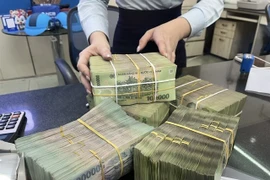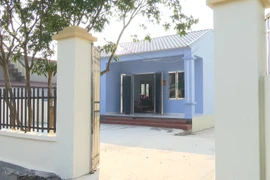Hanoi (VNS/VNA) - As experts have said the credit growth quota policy for commercial banks is currently inappropriate and hinders customers in accessing bank loans, the State Bank of Vietnam (SBV) has announced plans to gradually remove the scheme.
"The SBV will innovate its credit management measures and create a roadmap to gradually reduce and eventually eliminate the allocation of credit growth quotas for each bank," said SBV Deputy Governor Dao Minh Tu.
The credit growth quota system, which puts a cap on the credit expansion of each bank, has been maintained by the SBV since 2011, when Vietnam’s economy was experiencing hyperinflation stemming from excessive money supply. The tool was used to successfully control the quality of lending and ensure the safety of the banking system and macroeconomic stability.
However, experts said that after over a decade of implementation, this tool is currently inappropriate and hinders people and businesses from accessing bank loans. Due to the quota system, even with a monetary surplus, banks cannot lend if they run out of their allotted credit quota.
According to Le Hoai An, co-founder of the financial data provider Wigroup’s WiResearch, the credit policy was applied due to the characteristics of the Vietnamese economy at the time.
From 2007 to 2010, the economy saw overheating credit growth, with continuous growth exceeding 30-40% per year. This did not create added value for the economy and also led to serious consequences like high inflation and an increasingly bad debt ratio.
However, An said, from 2013 to 2019, with a credit growth rate of only about 14-15% per year, the banking system could still support the economy to achieve a GDP growth rate of about 7%.
“This proves that reasonable credit control does not mean restraining economic growth. On the contrary, it creates conditions for more stable and sustainable development,” An said.
According to An, there has also been a shift in credit flow. Before 2022, the growth rate of retail lending was often higher than that of corporate lending. Meanwhile in 2023, the growth rate of corporate lending was higher than that of retail lending for the first time.
This trend was also seen in 2024 and is expected to continue this year. Therefore, the shift in the credit flow shows the need for more flexibility in allocation, expansion or elimination of the credit growth quota.
The SBV can begin to gradually remove the policy when Vietnam's capital market is more developed, An said.
Test run
Experts suggest the SBV can choose the best commercial bank group to test the removal of the credit growth policy in its initial phase of implementation.
“The SBV can experiment with allowing about the 15-20 best banks to freely increase credit. The remaining banks will still have to apply the credit growth cap,” suggested Dr Nguyen Tu Anh, former Director of the Centre for Economic Information, Analysis and Forecasting under the Central Economic Committee.
However, Anh noted, testing the removal of the credit growth cap needs to be strictly controlled, because when the restriction is removed, the competitive environment between banks will become more intense. This will create motivation and encourage banks that are unable to freely increase credit to improve their governance quality and operational efficiency, so that they can join the group.
For banks that cannot compete, solutions must be considered, such as merging or cooperating with each other to gain competitiveness.
“In a market economy environment, competition is inevitable. Banks that are well-governed, have a good vision and do well will win this game,” Anh said.
Anh proposed that banks must meet certain criteria and conditions to qualify for the pilot programme. This not only creates strong competitive pressure in the banking system, but also promotes better quality banks.
Echoing Anh, An said that when removing the credit growth quota policy, the SBV needs to change the monitoring mechanism by tightening a series of financial indicators for banks, such as capital safety ratio, bad debt coverage ratio and other provisions.
"In particular, the SBV needs to closely monitor the situation to avoid capital flow going astray after removing the policy. If a bank has a lending rate for real estate or risky sectors that exceeds the safety limit, the SBV needs to take timely adjustment measures to ensure the stability of the financial system,” An noted./.

See more

Vietnam’s coffee exports reach 1.72 billion USD in first two months
Nguyen Duc Dung, Deputy General Director of the Mercantile Exchange of Vietnam (MXV), noted that coffee prices in the global market rose sharply. As a result, Vietnam's coffee export value increased by over 37% during this period, though its export volume decreased by 22%.
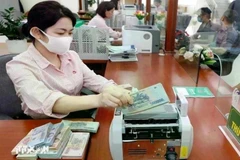
Reference exchange rate down 1 VND on March 18
The State Bank of Vietnam set the daily reference exchange rate for the US dollar at 24,793 VND/USD on March 18, down 1 VND from the previous day.
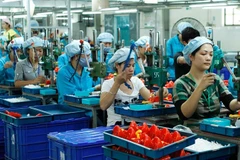
Finance ministry provides guidance to support sustainable business operations
Small- and medium-sized enterprises are supported by facilitating connections with financial institutions, investors and domestic and international experts.

IFC, Switzerland expand support for supply chain finance in Vietnam
Backed by a 5 million Swiss Francs (5.6 million USD) grant from the State Secretariat for Economic Affairs (SECO), the initiative will run until 2029, helping over 500,000 SMEs access up to 35 billion USD in financing.
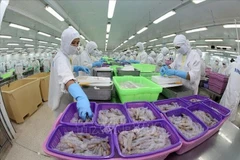
Vietnam becomes Brazil’s 2nd largest aquatic product supplier
According to the Department of Customs under the Ministry of Finance, Vietnam’s aquatic product exports reached $655 million in February, marking a 44.5% year-on-year increase. This brought the total for the first two months of 2025 to $1.42 billion, up 19% compared to the same period in 2024.

HCM City bank lending growth down in 2025
According to deputy director of the State Bank of Vietnam’s HCM City office Nguyen Duc Lenh, outstanding credit as of February was 3.936 trillion, down 0.17% from December 2024 but 12.2% up year-on-year.

E-tax system resumes full operations after temporary suspension
The suspension, which lasted from 5pm on March 12 until 8am on March 17, was necessary to enhance tax management and implement structural changes.

Customs trade hits 1.05 billion USD on first day of new model
Realising the 12th Party Central Committee's Resolution 18 on streamlining the political system’s organisational structure, on March 15, the customs sector began operating under a three-tier model: the Department of Customs, regional customs offices, and border checkpoints. This reorganisation has reduced the number of units by 485, or 53.77%, from 902
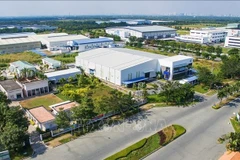
Industrial real estate expects a boost from policies, FDI
The acceleration of legal obstacles removal in recent industrial real estate projects is creating growth opportunities for many businesses participating in this segment. Notably, this is also one of the key factors contributing to attracting investment and boosting growth for real estate in 2025.

Vietnam Airlines, Vietjet Air flights to operate from Tan Son Nhat’s new terminal in May
Designed to handle 20 million passengers annually, Terminal T3 of the Tan Son Nhat International Airport includes four main components: the passenger terminal, a multi-story parking facility integrated with non-aviation services, the elevated road system at the terminal frontage, and aircraft aprons. The total investment for the terminal is nearly 11 trillion VND (431.2 million USD), with construction beginning in December 2022
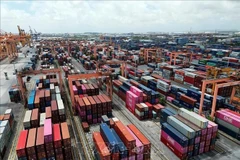
Vietnam aims for 454 billion USD export revenue amidst global headwinds
Vietnam exported 65.2 billion USD worth of products in January-February, a 9.9% increase compared to the same period last year. Meanwhile, imports totaled 62.9 billion USD, rising 16%, resulting in a trade surplus of 235 million USD.

Reference exchange rate up 15 VND at week’s beginning
The State Bank of Vietnam set the daily reference exchange rate for the US dollar at 24,794 VND/USD on March 17, up 15 VND from the previous day.

Vietnam Airlines to resume Hanoi-Moscow direct flights from May 8
As part of its expansion strategy, Vietnam Airlines plans to launch and restore 15 international routes in 2025, connecting Vietnam to key destinations such as Italy, Russia, Denmark, China, India, Japan, the Republic of Korea, and the UAE.

Vietnam well-positioned to develop international financial centre: Scholar
Vietnam has the foundation and potential to successfully build an international financial center, according to Associate Professor Nguyen Dang Bang, a finance expert at the University of Cambridge’s Judge Business School.

Forum promotes Japan-Vietnam-Thailand trade and tourism connectivity
Fukuoka, northeastern Thailand, and central Vietnam could form an important economic triangle, bringing practical benefits to regional economic development.

Vietnam should be flexible in selecting financial centre models: expert
Tuan also highlighted the importance of human capital, one of the five important factors to successfully build a financial centre, citing the Global Financial Centres Index, which ranks business environment, human capital, infrastructure, market development, and reputation as the key drivers of success.

Hoa Phat’s hot rolled coil products not subject to EU's anti-dumping duties
The exemption from anti-dumping duties reflected the firm’s legal expertise in handling international trade regulations. Furthermore, downstream businesses using Hoa Phat’s HRC will have greater opportunities to export to the EU without concerns over origin or raw material pricing issues.

Rice exports set for rebound amid strong demand
Customer demand remains high, with Vietnam exporting over one million tonnes of rice in the first two months of the year.
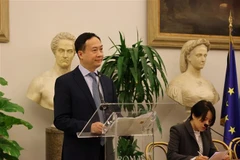
Vietnam - bright spot in Italy's Asia strategy
Vietnam is currently Italy's largest trading partner in ASEAN, with bilateral trade turnover reaching 6.9 billion USD in 2024, an increase of 13.1% year-on-year.

Vietnam, US look to strengthen comprehensive energy cooperation
Vietnam’s consistent policy is to foster a balanced, sustainable, stable, and win-win economic relationship with the US, the minister stated. Vietnam does not intend to create any barriers that could negatively impact the US’s workers or its economic and national security, Minister of Industry and Trade Nguyen Hong Dien said.
